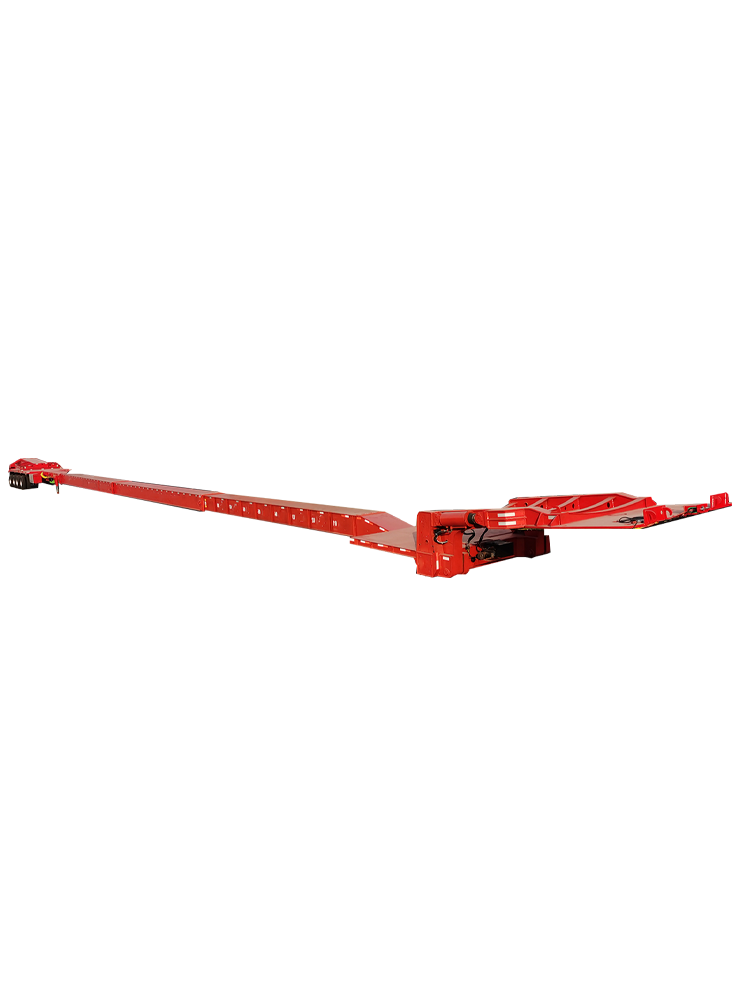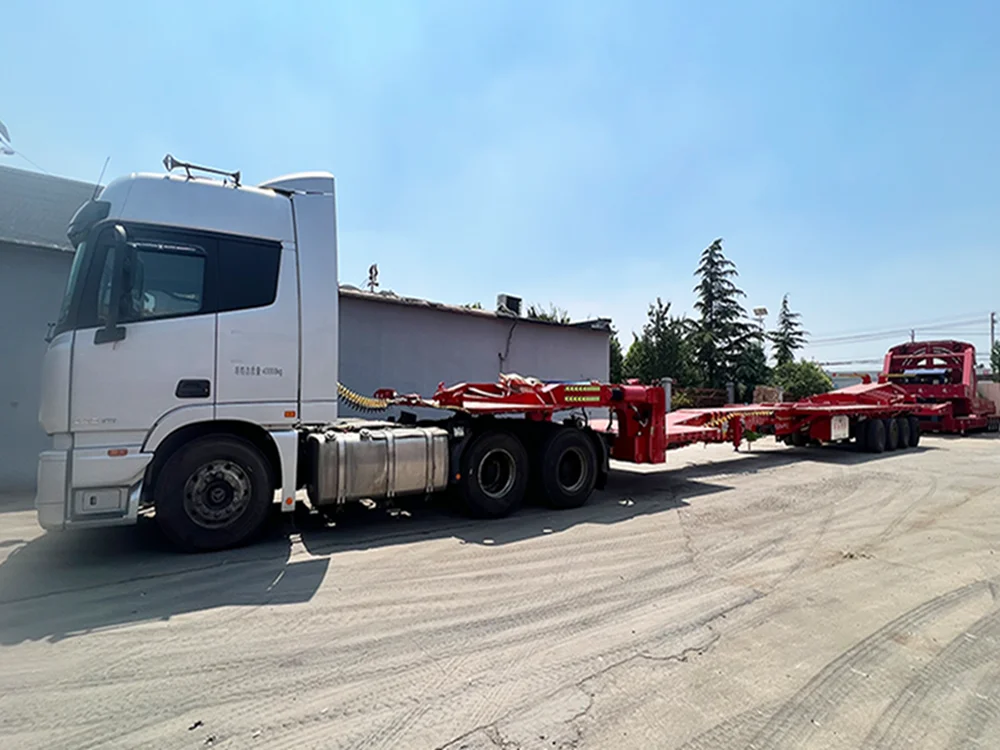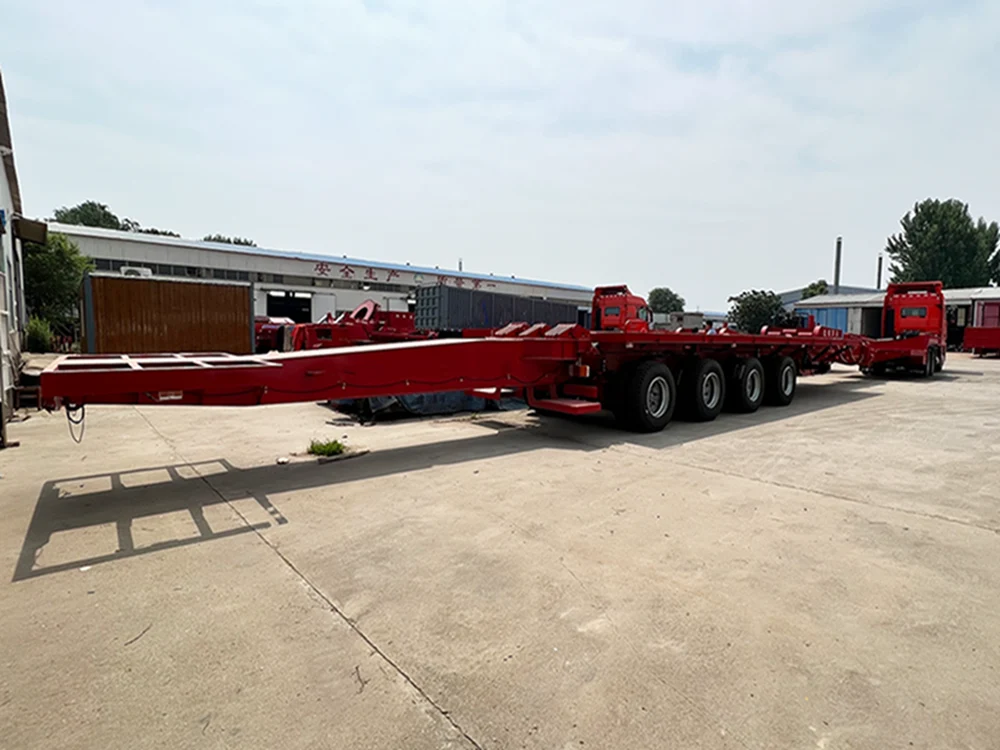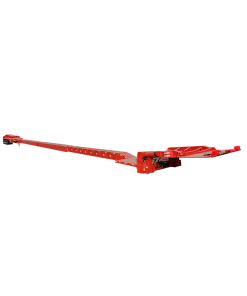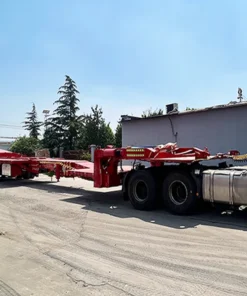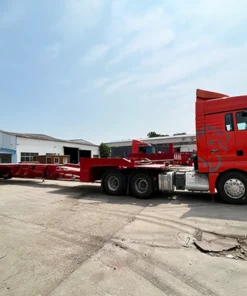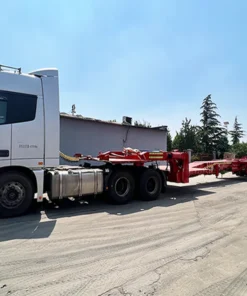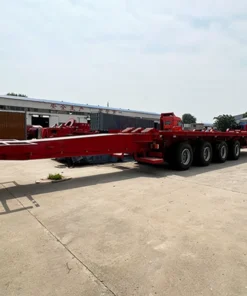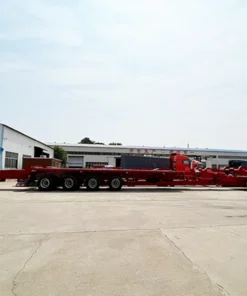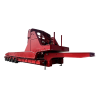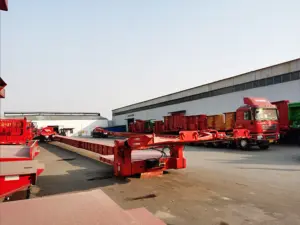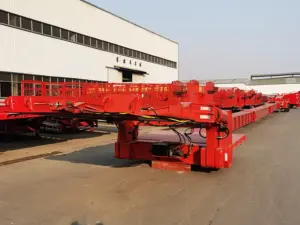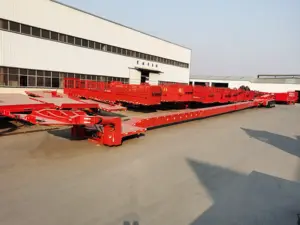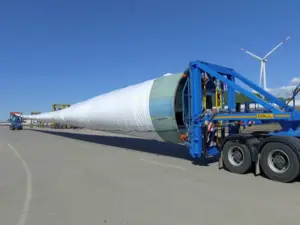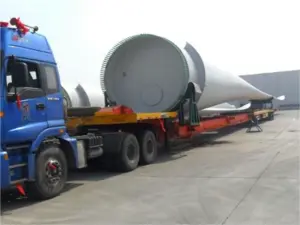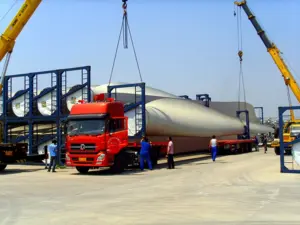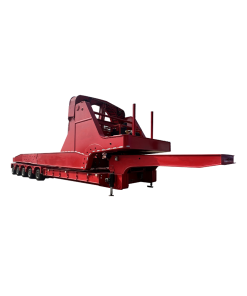These blades can reach lengths of over 100 meters. As a result, they pose significant logistical challenges for transportation. Therefore, extendable wind blade trailers came into being.
They play a critical role in the wind energy industry. In detail, they help to overcome logistical challenges. Besides, they make it possible to install wind turbines in a variety of locations. As the wind energy sector continues to grow and turbine blades become even larger, the role of these specialized trailers is likely to become even more crucial.
| Specification | |
|---|---|
| Size | 17,000mm (can be extended to 26,000mm)*14,000mm |
| Payload | 50tons(after fully extension) 150tons(fully enclosed) |
| Chassis | T700 Plates With Quality Sheet For Automatic Arc Welding Submerged Meta, Compatible With Body Design, One-Piece Chassis. |
| Main Beam | Height:500mm, Upper Plate Is 25mm, Down Plate Is 25mm, Double Middle Plate Is 12 mm. |
| Side Beam | Side beam 280mm, three-in-one H-shaped edge beam |
| Floor | Thickness of Surface is 5mm; Steel Plate(Full coverage floor over axles) |
| Suspension | Mechanical Suspension With Leaf Spring |
| Axles | 13 Tons |
| Tyre(Optional) | 12.00*12 Pcs Steel Tyre; LINGLONG |
| Safety Protection | Protection Rails On Both Sides And Rear Of The Trailer |
| Tool Box | As International Standards*1 Pcs |
| Spare Wheel Carrier | As International Standards*1 Pcs |
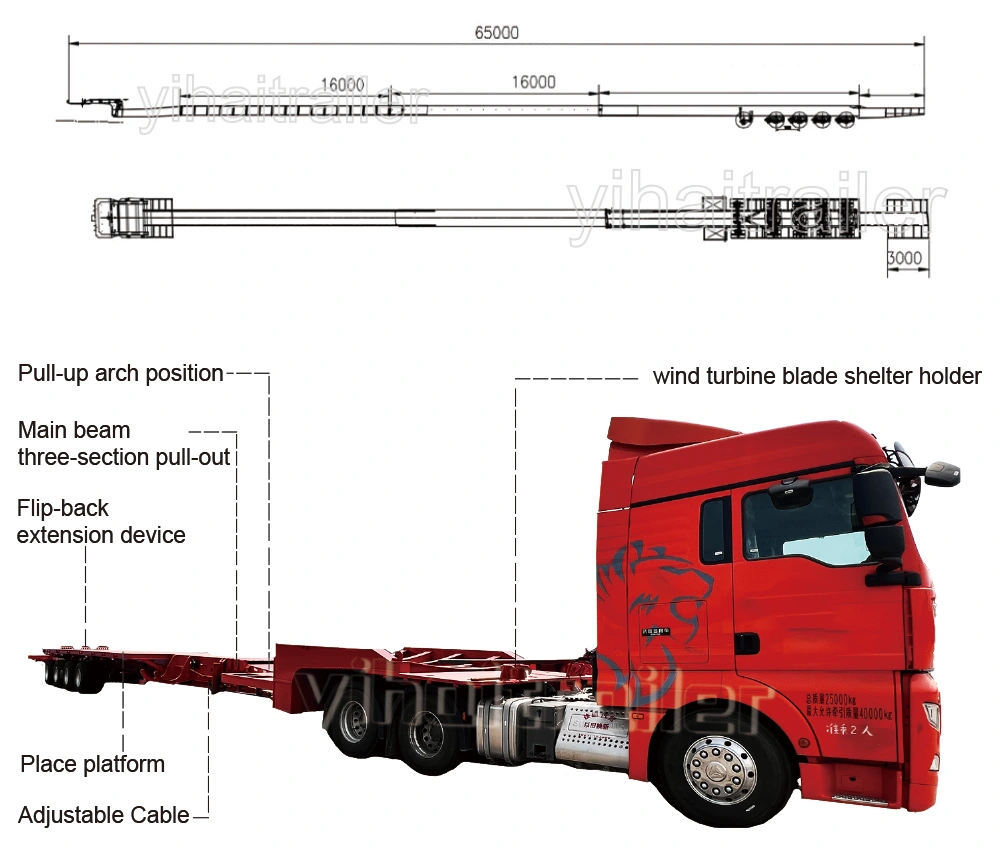
wind turbine blade shelter holder
This device is located in front of the wind power transport vehicle on the mountain road and is mainly used to stabilize and fix the wind power blade frame to ensure safe transportation. This design aims to provide an efficient, safe and simple method to ensure the stability and reliability of mountain wind power transport vehicles when transporting large wind power blades.
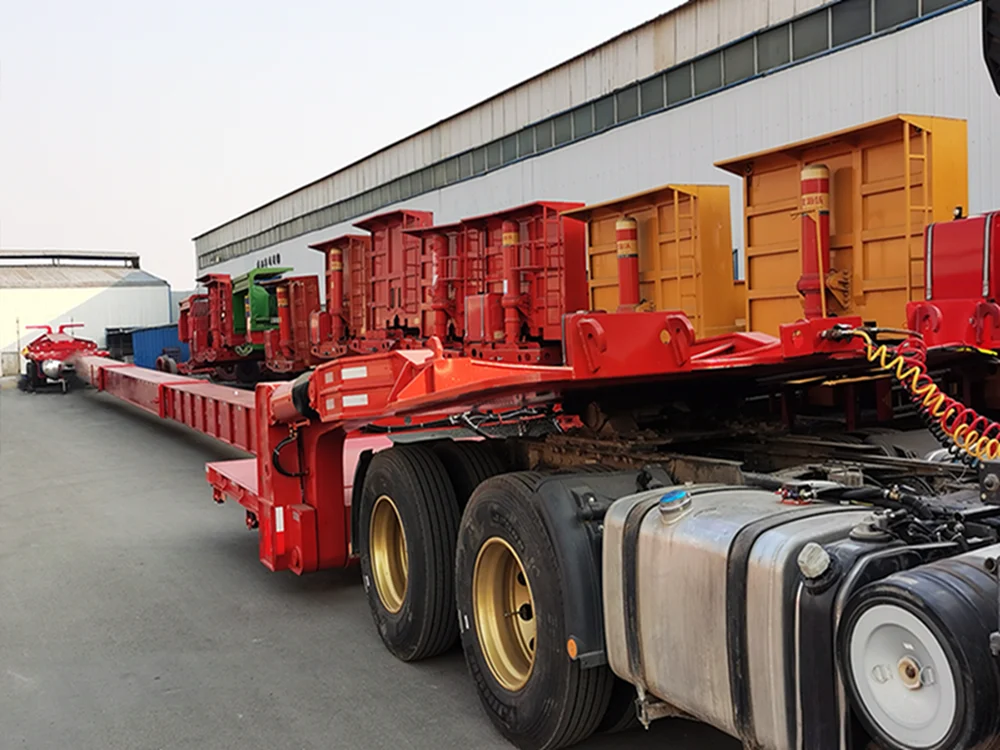
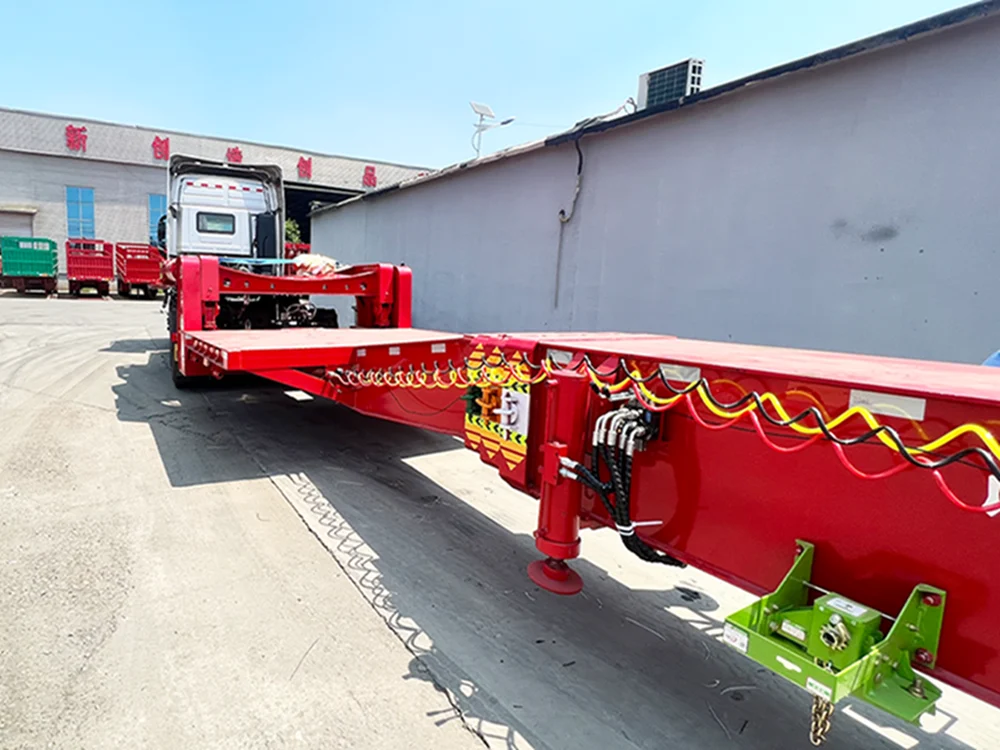
Pull-up arch position
There is a 100mm arch at the starting point of the girder pull-out, so that after the trailer is completely pulled out, the pull-out part can be completely parallel to the ground when fully loaded, ensuring good passability and ensuring smooth transportation.
Main beam three-section
The entire trailer pullout adopts a three-section design, which means that the vehicle can be divided into three parts when needed to adjust the vehicle length in different transportation scenarios. This design allows for greater flexibility and can be adapted to specific road and transport requirements.
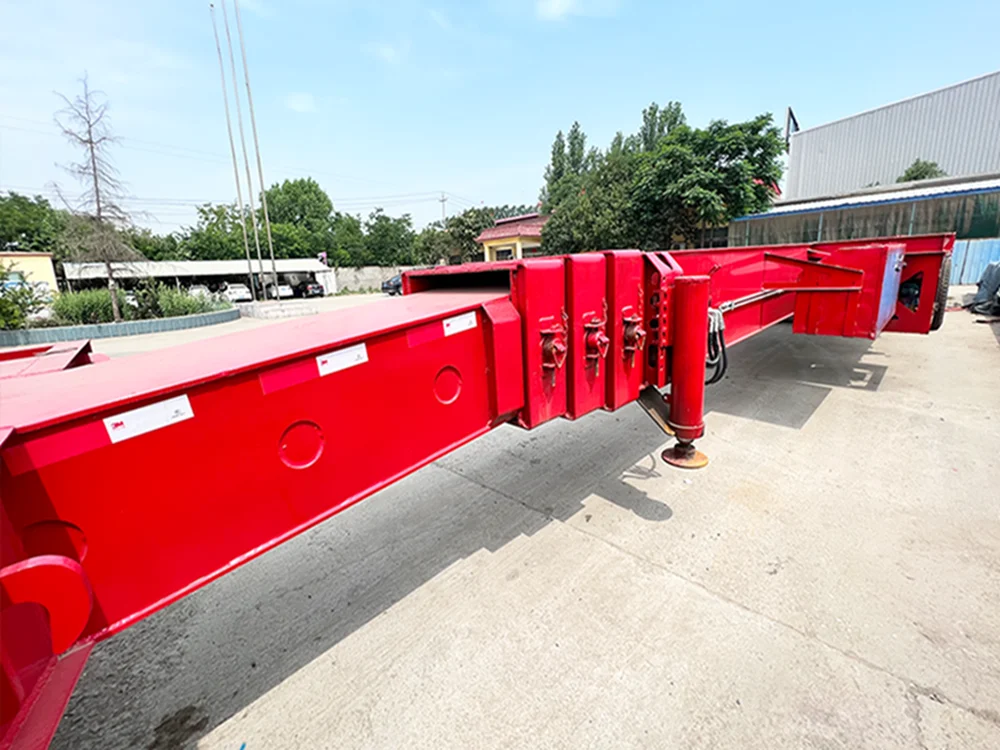
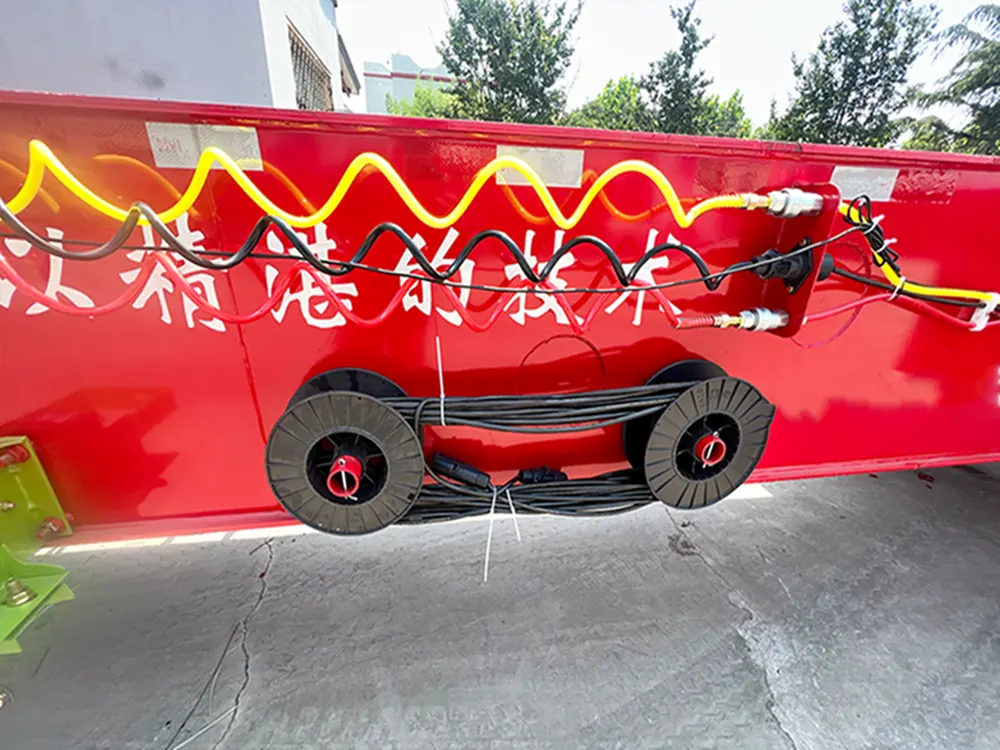
Adjustable Cable
The wind power transporter is designed with adjustability in terms of electrical and gas lines to accommodate different draw lengths. This design allows the wind power transport vehicle to flexibly adapt to different transportation needs when pulling. Whether the vehicle length needs to be shortened when driving on mountain roads, or the vehicle length needs to be maximized to accommodate large wind power equipment on flat road sections.
Here are some primary application areas of refrigerated trailers :
1.Energy Industry: In addition to wind energy projects, this extendable wind blade trailer may be used to transport other energy equipment such as solar panels, generator components, etc.
2.Construction and Infrastructure: Transports large building structures, bridge components, tunnel equipment, and more.
3.Mining and Heavy Industry: Transporting large ores, mining equipment, heavy machinery, etc.
4.Agriculture: Transporting large agricultural equipment such as tractors, harvesters, etc.
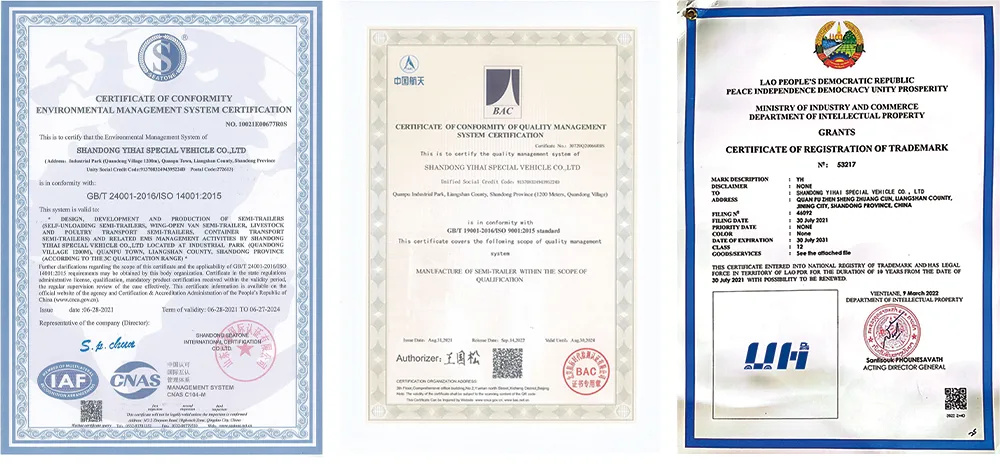
FAQ of Extendable wind blade trailer
Retractable wind blade transport trailers are often equipped with pull-out main beams. These pull-out main beams can be extended or reduced as needed to accommodate the transport of blades of different lengths.
When transporting blades, trailers often use a variety of safety measures, including driving slowly, using stable supports and fixtures, and monitoring the condition of the blades. Drivers and transportation companies often receive specialized training to ensure safe transportation.
Yes, a special permit is usually required to transport extra long blades. These licenses are usually issued by the local transportation department or related agencies to ensure the legality and safety of the transportation process.



